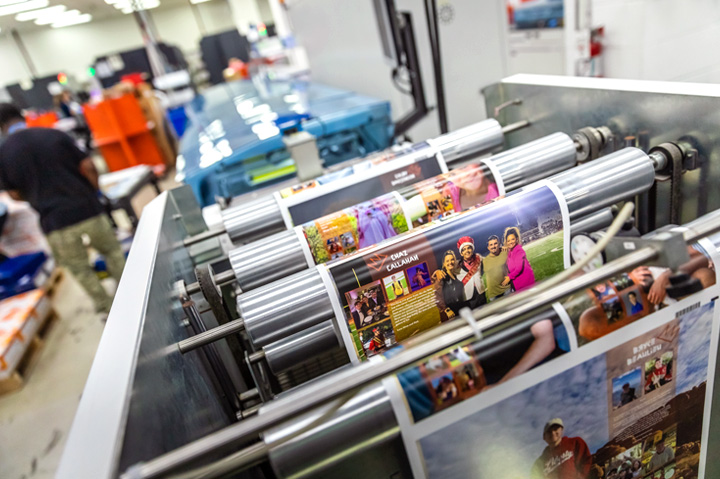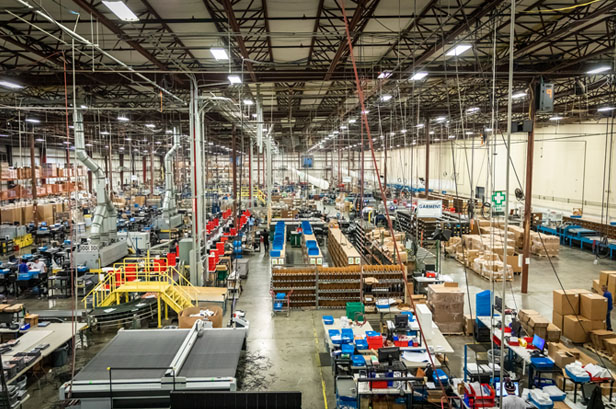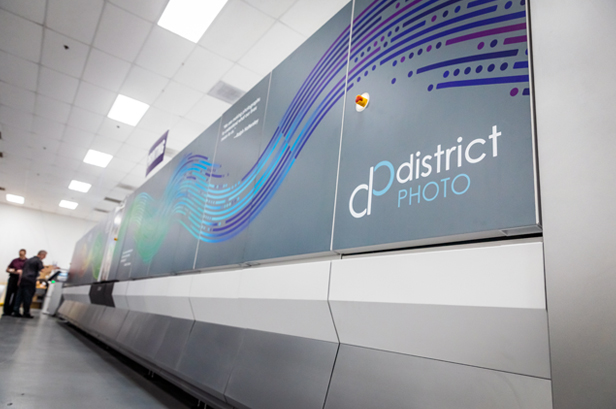Strategy February 11, 2025
Case Study: How District Photo Evolved From Film to Digital Dominance
Now celebrating its 75th anniversary, the Beltsville, MD-based printer has found success branching out into a variety of custom products.
Key Takeaways
• Technological Evolution: District Photo (DPI) transitioned from a mail-order photo lab to a global printing powerhouse by embracing digital technologies and expanding into photo products like books and mugs.
• Strategic Acquisitions: DPI’s growth was fueled by key acquisitions, including Paramount Photo, Nashua Photo and CafePress, which helped diversify its offerings and enter new markets.
• Product Diversification: DPI now produces a wide range of personalized photo products, including calendars, yearbooks and custom promotional items.
• Future Growth: DPI aims to expand into new markets and applications while continuing to innovate and adapt to industry trends.
District Photo (DPI) started out as a small silver halide, black-and-white photo lab. As it celebrates its 75th anniversary, the Beltsville, MD-based company looks very different from its early days, now a printing powerhouse with locations around the world.

Inkjet web presses operate in DPI’s Beltsville, MD, facility. The company has eight Canon ProStream presses, giving it flexibility to print a variety of products. (DPI)
Jim Gavitt, chief revenue officer, notes that it was originally a mail-order business. “They were one of the largest mail-order companies in the country,” he says, “so they were getting 35 mm film sent in, processing it and sending back a package.”
But as technology evolved, the company changed with it to survive. One of the major shifts was in 1989, when Neil Cohen took over as president, bringing with him a push to embrace emerging digital technologies.
“Neil really had the vision to take the company into a digital space,” Gavitt says. “We also moved into photo products – books, mugs and all the other things.”
And that shift to doing more than just processing film has made all the difference. Today, the company is one of the largest producers of photo products on three continents, creating everything from digitally printed photo books to a wide range of personalized photo products, along with everything from calendars, yearbooks, day planners, sheet music, educational products and wall décor to custom promotional products for major brands.
To do it, the company operates more than 40 HP Indigo presses and eight Canon ProStream inkjet web printing presses, giving it the flexibility to produce highly personalized, individual products, where every piece of a run is unique to that customer for many of the applications it produces.
But how did it get from point A to point B?
The Evolution of DPI
DPI engaged in a series of strategic acquisitions over the years, allowing it to rapidly grow certain areas at the right times, bring on new equipment and people to help see that growth through and give them access to new markets organically.
A few highlights of this strategy include:
- The purchase of Paramount Photo in 1982.
- The purchase of Nashua Photo in 1998.
- The acquisition of Snapfish in 2001 (which was subsequently sold to HP in 2005).
- The acquisition of CafePress in 2018.
While those weren’t the only major acquisitions, they represent a few that helped drive the business in new directions. Another interesting point on the timeline is that DPI installed its first digital press in 1994; today, it’s an all-digital operation, showing just how far that technology has come.

With its many acquisitions, DPI has the advantage of multiple facilities, including this one in Louisville, KY. (DPI)
“Digital print technology for book publishing was the really major change in my mind because that added a whole classification of product to the business,” Gavitt says. “As that market grew, we grew up with that, if you will.”
While DPI has expanded beyond just photo prints, those still make up a significant chunk of the business, around 25%. The rest is a broad mix of products, from yearbooks and coffee mugs to soft items like shirts, blankets and towels.
And it’s not just individuals doing the buying either. DPI has found a large market in small businesses. “There are 100,000-plus little vendors selling T-shirts and mugs and all this stuff online,” Gavitt says. “And we have figured out how to be a fulfiller for them.”
Breaking Into Promo
One area the company hasn’t focused on yet is corporate promotional products, Gavitt says, but he sees that changing. In fact, moving into promotional products is the “obvious next step” for its evolution, he adds.

DPI has many inkjet presses, which it uses to produce everything from photo books to personalized promo products for its customer base. (DPI)
Today, says Shelly Bernecker, global marketing director at DPI, the company has added a wide range of promo product options – with more constantly being developed. This includes drinkware, apparel, journals, calendars and magnets. Some of the more interesting options it has experimented with include custom-printed puzzles, car magnets, fridge magnets with a hidden bottle opener, coasters and trivets, personalized keepsake boxes, pot holders and pins.
Gavitt says he’s always “trying to follow the industry trends,” translating what consumers are buying as gifts and turning them into products that will also be attractive to corporate customers.
“You have to make sure you have the relevant products people want to buy,” he says. “One of the biggest challenges, even if you have a great idea, is knowing if it’s going to sell.”
On the flip side, going to customers with new ideas helps make DPI a valuable partner, rather than just an order taker. “Some of our big photo customers are the big-box guys, the guys that have a lot of retail chains, and they’re losing people left and right due to budget constraints,” Gavitt says. “If we can add value by filling in some of those gaps with marketing and information and new products, I believe we differentiate ourselves.”
What’s Next for DPI?
DPI’s next avenue for growth isn’t expanding into new technologies, Gavitt says, but finding new markets for the areas where it’s already an expert.
“New applications, new business, new markets, new verticals – that’s really our focus at this point to grow that revenue,” he says. “The photo space isn’t really growing dramatically anymore; it’s a pretty mature market. So, in order to grow, we obviously have to look at other markets.”
What’s most important, he adds, is staying nimble and open to ideas.
“[You have to be] constantly moving with the market and supplying what’s needed to keep the business moving forward,” he notes, adding that with the advent of Shutterfly and other similar services, the photo business has become saturated. “If you’re stagnant and you just want to be the same old, same old, you’re just going to be stuck in time.”
Gavitt also isn’t ruling out more acquisitions. Especially with the convergence going on in today’s printing industry, the ability to consolidate additional work under its own banner is appealing – when the right fit comes along.
Toni McQuilken is a senior content editor with ASI’s strategic media partner PRINTING United Alliance. In addition to content sharing, other initiatives launched as part of the partnership include a dual membership program and the ASI Show Pavilion – a “show-within-a-show” concept that will debut at the 2026 PRINTING United Expo in Las Vegas.
